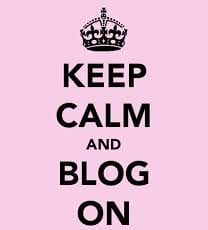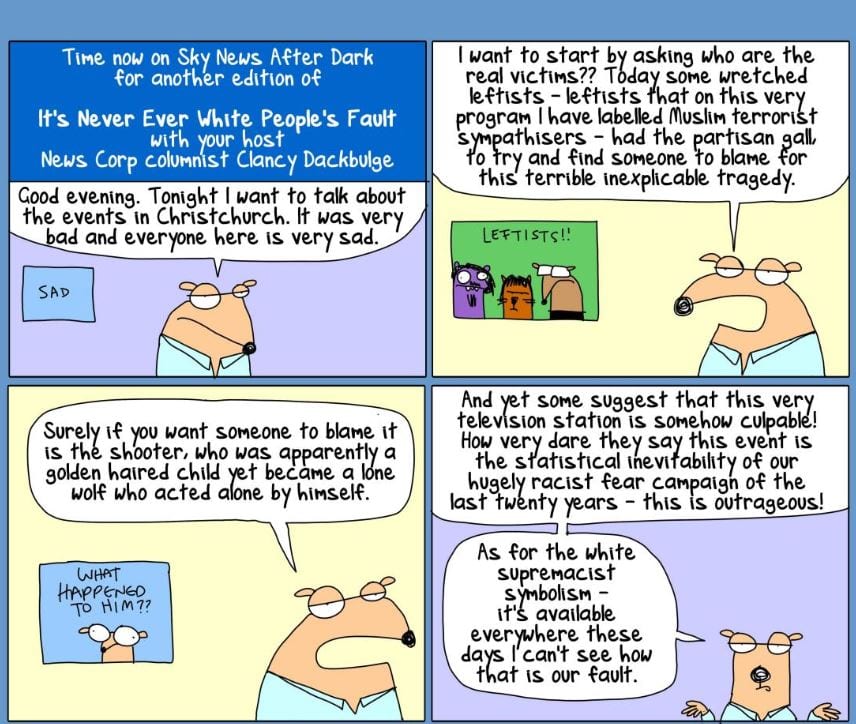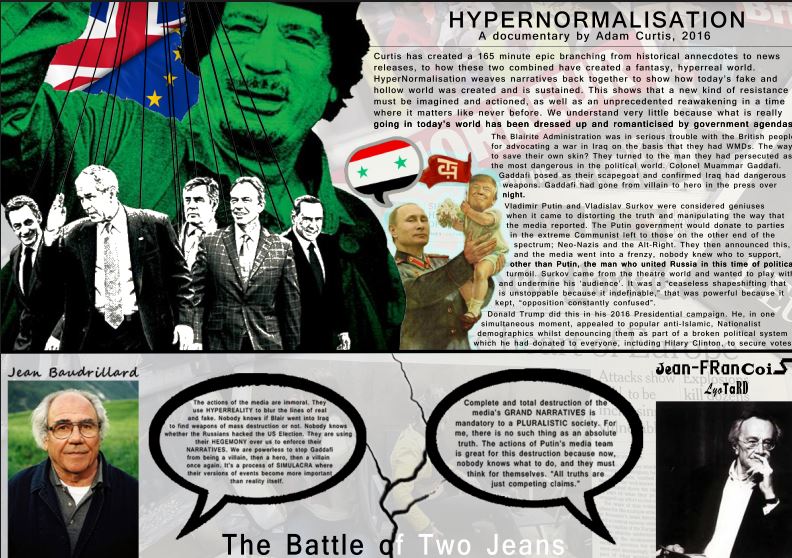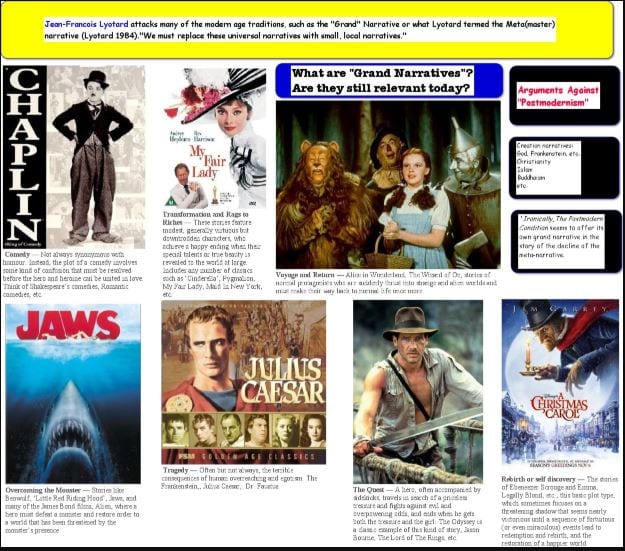As a media art form, music videos are often conduits for various elements of postmodern culture. Sometimes they also, point a self-accusing finger at themselves for doing so and sometimes the videos and lyrics are about postmodern society too.
Andrew Goodwin, a renowned media theorist sums up the postmodernism of music videos:
- Blurs high art and low art – it is media for everyone with no boundaries.
- Abandons/challenges grand narratives – incomplete narratives, no sense of resolution, rejection of the overarching ideologies of society/history – love conquers all, men are the breadwinners, god is the answer etc.
- Intertextuality – borrows from other texts; deliberately, unknowingly, alludes to, knowing nod to – all of which fits with Jameson’s ideas on ‘nothing new, a flatness’ or as he puts it ‘blank parody’.
- Loss of Historical reality – pastiche and intertextuality blur history and chronology so that conventional notions of past, present and future are lost in a melange of images, all of which appear to be contemporary.
The Rizzle Kicks – is made in a postmodern fashion but also points the finger at postmodern society.
Lilly Allen, The Fear is also made in a postmodern fashion but also points the finger at postmodern society.
We will be studying in depth some current music videos, one of which you should choose to focus on as your 2nd media text in your essay (the other one will be Nosedive, Black Mirror by Charlie Brooker).
Music Videos are often examples of postmodern media, not only because their place as a recognised art form has come about in the postmodern era but mainly because they evidence a range of ideas about what makes a text postmodern.
Intertextuality
- Pastiche – use of a previous text as the basis for the whole music video – in the style of
- Parody – making fun of a previous text
- Homage and Quotation – sampling
- Weaponised intertextuality – those deliberate Easter Eggs – we will look more closely at Ariana Grande and This is America as a detailed texts later in the term.
Bricolage
- a melange, mixture of styles – cartoons, animations, dance, drama, acting, documentary, other footage.
Self-referential
- think of Katy Perry breaking the 4th wall at the end of Chained to the Rythmn – let’s draw attention to its own construction.
GENERAL SIGNIFICANCE relating to Music Videos and Postmodernism
- They manipulate time and space – flashbacks, incomplete narratives usually present and they often challenge the grand narratives (more on this later) – there is not always a happy ending, a dominant male, success after working hard for a living.
- Play with the relationship between audience and text – breaking the 4th wall and there is often a presumption they are culturally competent, deliberately playing with their expectations.
- Play with the distinction between reality and representation.
- They blur the lines between high art and what is considered low art.
- This is a little old now but it shows a self-referentiality (this is a music video that we have constructed) but it also points the finger at a wider postmodern scope i.e. the idea that people are lost in their hypereal worlds, unaware of their real lives and surroundings. We will look more at this later.






